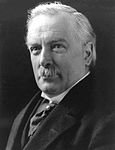Our website is made possible by displaying online advertisements to our visitors.
Please consider supporting us by disabling your ad blocker.
1918 United Kingdom general election in Scotland
| |||||||||||||||||||||||||||||||||||||||||||||||||||||||||||||||||||||||||||
All 74 Scottish seats to the House of Commons | |||||||||||||||||||||||||||||||||||||||||||||||||||||||||||||||||||||||||||
|---|---|---|---|---|---|---|---|---|---|---|---|---|---|---|---|---|---|---|---|---|---|---|---|---|---|---|---|---|---|---|---|---|---|---|---|---|---|---|---|---|---|---|---|---|---|---|---|---|---|---|---|---|---|---|---|---|---|---|---|---|---|---|---|---|---|---|---|---|---|---|---|---|---|---|---|
| |||||||||||||||||||||||||||||||||||||||||||||||||||||||||||||||||||||||||||
 Results of the 1918 election in Scotland for the county and burgh seats Unionist Coalition Liberal Liberal Labour | |||||||||||||||||||||||||||||||||||||||||||||||||||||||||||||||||||||||||||
A general election was held in the United Kingdom in 1918, and all 74 seats in Scotland were contested. The election was called immediately after the Armistice with Germany which ended the First World War, and was held on Saturday, 14 December 1918. The governing coalition, under Prime Minister David Lloyd George, sent letters of endorsement to candidates who supported the coalition government, these being primarily Conservatives and Unionists and Coalition Liberals. These were nicknamed "Coalition Coupons", and led to the election being known as the "coupon election".
Scotland was allocated 74 seats in total, with 71 territorial seats (an increase of 1 over the previous election), comprising 32 burgh constituencies and 38 county constituencies.[d] The territorial seats used the first past the post voting method. There was one university constituency, which elected an additional 3 members using the Single Transferable Vote (STV) method,[1] which replaced the two single-member constituencies of Glasgow and Aberdeen Universities and Edinburgh and St Andrews Universities. As voters in university constituencies voted under a different system, and in addition to their territorial vote, the results are compiled separately.
The coalition Unionists, who had formed in 1912 from the unification of the Scottish branches of the Conservative and Liberal Unionists were the main beneficiaries of the election, gaining 18 seats compared to the pre-war total of the two parties. The Labour Party came second in terms of votes won, but secured only 6 seats, coming in behind both the Coalition Liberals (led by Prime Minister David Lloyd George and the official Liberal Party (led by Herbert Asquith) in terms of seats. Two further "Labour" members were elected outwith the official Labour slate, with George Barnes winning Glasgow Gorbals for the coalition standing against the official Labour candidate as a Coalition Labour candidate, and Frank Rose winning Aberdeen North under an "Independent Labour" label.
When combined with results from across the UK, the result was a massive landslide in favour of the coalition, with massive losses for Liberals who were not endorsed.[2] Nearly all the Liberal MPs without coupons were defeated, including party leader H. H. Asquith, who lost his seat in East Fife.[3] Asquith continued as Liberal leader, and subsequently returned to the parliament as member for Paisley in the 1920 Paisley by-election.
Cite error: There are <ref group=lower-alpha> tags or {{efn}} templates on this page, but the references will not show without a {{reflist|group=lower-alpha}} template or {{notelist}} template (see the help page).
- ^ "Research Briefing: Voting systems in the UK". Library of the House of Commons. 10 January 2023. Retrieved 26 November 2024.
- ^ McEwen, J. M. (1962), "The Coupon Election of 1918 and Unionist Members of Parliament", Journal of Modern History, 34 (3): 294–306, doi:10.1086/239118, JSTOR 1874358, S2CID 143523855
- ^ Ball, Stuart R. (1982). "Asquith's Decline and the General Election of 1918". Scottish Historical Review. 61 (171): 44–61.
Previous Page Next Page






